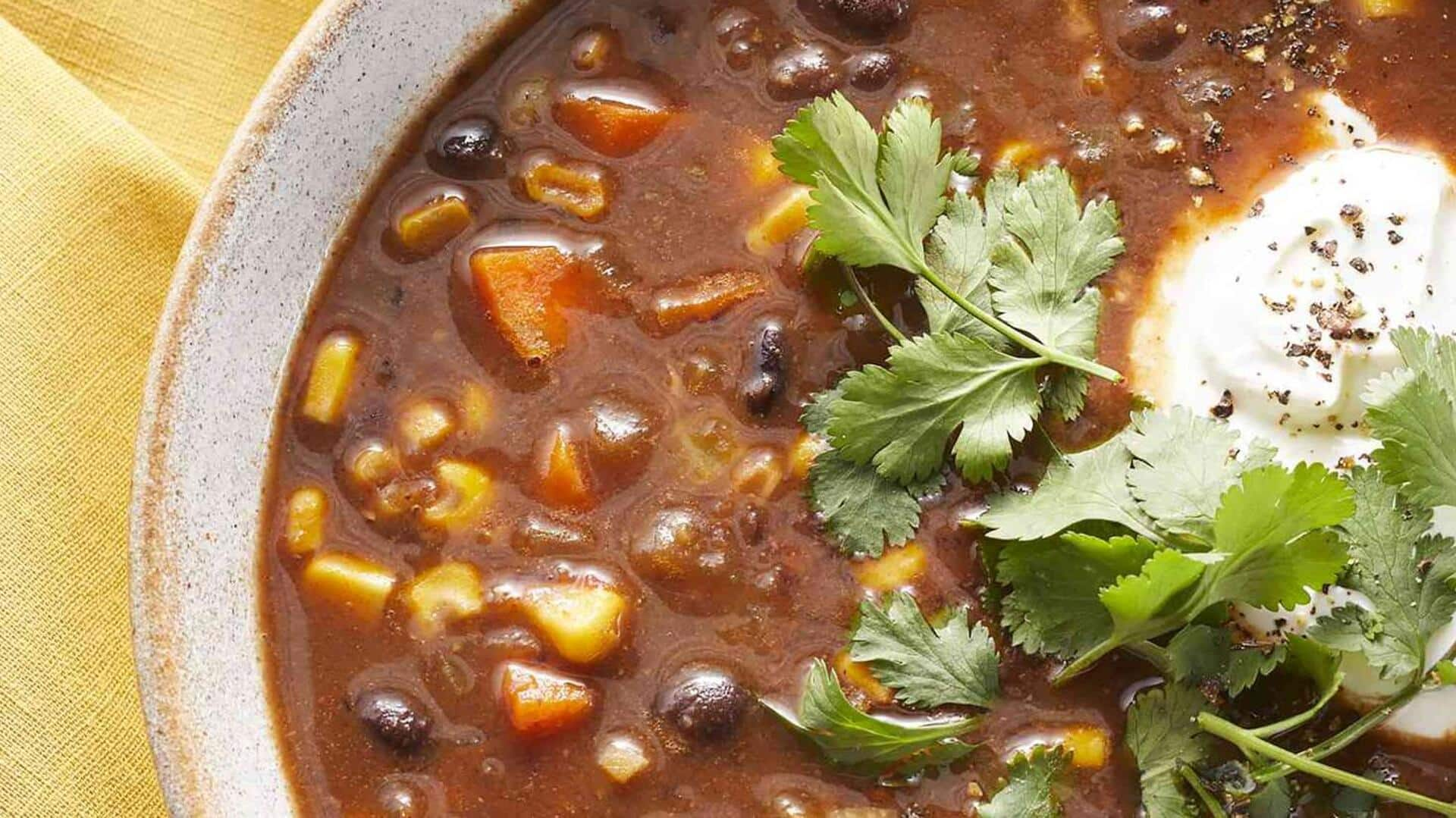
Your guests will love this Cuban black bean soup
What's the story
Cuban black bean soup is a hearty, flavorful dish that has its roots deep in Cuban cuisine. Known for its rich texture and aromatic spices, this soup is a staple in many households, especially during colder months. It's not only nutritious but also a vegetarian and eggless option for those looking to enjoy a traditional meal with a twist. So, let's get cooking!
Ingredients list
Gather the following ingredients
To prepare this delicious soup, you will need two cups of dried black beans (soaked overnight), one large onion (chopped), two green bell peppers (chopped), three cloves of garlic (minced), one teaspoon of ground cumin, one-half teaspoon of oregano, two bay leaves, salt and pepper to taste, six cups of vegetable broth, and two tablespoons of olive oil. For garnishing, arrange for diced avocado and chopped cilantro.
Step 1
Preparing the beans
Begin by rinsing the soaked black beans under cold water. Place them in a large pot with six cups of vegetable broth. Heat to a boil over high, then lower to simmer. Cover and let cook for about an hour or until beans are tender but not mushy. This crucial step achieves the soup's ideal texture.
Step 2
Sauteing vegetables
While the beans are simmering, take another pan and heat two tablespoons of olive oil over medium heat. Add chopped onions and green bell peppers to the pan. Saute until they are soft and translucent, which should take about five minutes. Then add minced garlic, ground cumin, oregano, salt, and pepper, and cook for another minute until fragrant.
Step 3
Combining ingredients
Once your beans are tender and vegetables sauteed, combine them in the large pot with the beans. Also, add the bay leaves. Let everything simmer on low heat for about 30 minutes. This simmering is crucial for the flavors to meld together perfectly, ensuring a rich and aromatic soup that captures the essence of traditional Cuban cuisine.
Step 4
Final touches
After simmering, first remove the bay leaves. Then, for a thicker texture with some beans left whole, partially puree the soup using an immersion or standard blender. This step is key for those preferring a thicker consistency but still desiring some texture variation. Adjust the pureeing to achieve your preferred soup thickness, ensuring a delightful balance between smooth and chunky elements.